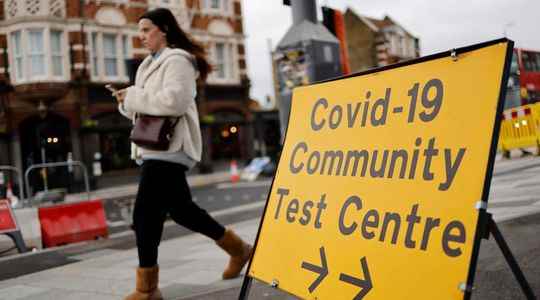What will the future be made of? While in Europe many countries are relaxing measures to fight the virus, the British scientific council has looked into the possible evolutions of the epidemic in the medium term. In a synthetic document published on February 11, the advisers of SAGE (for Scientific advisory group for emergencies) draw up four scenarios, from the most optimistic to the most pessimistic, which list the possible ways of improving or deteriorating the health situation.
If they are cautious, stressing that “it is not possible to know with confidence what will happen in the next 12 to 18 months”, in all the scenarios considered by the SAGE epidemic waves are expected. “Their impact and their frequency differ according to the transmissibility and the severity of the variants”, it is written. Whatever the scenario, the experts estimate that a certain stability will be reached, but after a relatively long time of 2 to 10 years. They point out that the transition phase is likely to be “very dynamic and unpredictable”. These scenarios should be read as a panel of possible futures, but they are not the only plausible paths the pandemic could follow. In addition, switching from one scenario to another over time is also possible, scientists warn.
In the best of the cases studied, the authors bet that new variants emerge and do not show transmissibility or increased severity. Vaccines retain their effectiveness against these new strains, antiviral drugs remain effective in preventing severe forms of the disease and their effectiveness does not decrease in the face of new virus mutations. As a result, epidemic resurgences are relatively weak in the fall and cause few serious forms.
In the scenario that remains optimistic, but more balanced, the authors envision seasonal waves of infection that continue to occur due to waning immunity and/or the arrival of new variants. According to specialists, there would thus be good and bad years, and certain variants could cause more serious cases. Serious illnesses and mortality are therefore largely limited to the vulnerable, namely the elderly and those who are not immune. With this in mind, vaccines are regularly updated, and administered each year to vulnerable people or even to the entire population during the most difficult years.
A more pessimistic evolution would see waves of infection returning repeatedly throughout the year, carried by unpredictable variants that would be resistant to antiviral drugs. “Immunity and variant-matched vaccines would continue to provide good protection against the most severe consequences of the disease,” but the disruptions would be widespread with large impacts in certain groups, such as school children. Moreover, this epidemic could go hand in hand with an influenza epidemic, which would generate “additional burdens on health care”.
Finally, the worst-case scenario is based on incomplete global vaccination and circulation of the virus in animal populations. Consequently, new variants could appear including by recombination, that is to say an exchange of genetic material between different variants creating a virus which would be the product of these two variants. “Unpredictable changes” would then appear in the way the virus causes disease, leading to a difference in the age profile of severe illness and mortality, and increased long-term impacts after infection, according to scientists from the WISE.
Barrier measures retained
Can these scenarios come true? “The best scenario does not seem realistic. It is incompatible with what has happened so far, in particular on the transmissibility and the evolution” of the virus, comments on Twitter epidemiologist and biostatistician at the University of Western Australia, Zoë Hyde. Various elements of the scenarios now seem to be able to be ruled out. In particular the idea of a seasonality of the virus, mentioned in the moderate optimistic hypothesis. “The seasonality of the epidemic is questionable, we see it with Australia, which is coming out of the biggest wave they have known, while they are in the middle of summer… In Europe we see that there has higher waves in winter but we cannot expect a blockage of the epidemic in summer, it will at most be a brake”, analyzes Antoine Flahault, epidemiologist and director of the Institute of global health in Geneva.
While it is difficult to predict which scenario could take over, SAGE scientists point out that a significant vaccination rate of the world’s population will be essential, to moderate the severity of the epidemic. Barrier gestures should also continue to play an important role in reducing transmission, they add. An observation shared by Antoine Flahault who insists on the need to “pile up barrier measures when the circulation of the virus is very strong”. Finally, rapid access to control tools and drugs will also help to better understand the epidemic. “Overall, the speed at which access to testing, vaccination and antivirals can be scaled up in an emergency will significantly affect outcomes,” the authors conclude.
